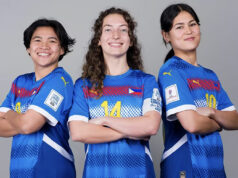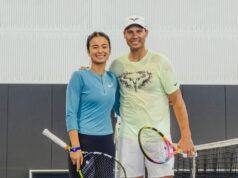The men’s singles final of the 133rd edition of The Championships in Wimbledon established a handful of firsts that won’t likely be eclipsed anytime soon. Yet, even as the epic Sunday match didn’t appear to have an end if not for a newly instituted rule change that mandated a tiebreak on the fifth set after a 12-12 score, it figures to go down in tennis annals as one of the best ever because of who won, and how he did so. Indeed, just about every warm body on Centre Court outside of the box of defending titleholder Novak Djokovic cheered for his opponent, and to a degree that stretched the boundaries of what should be deemed allowable in a so-called gentleman’s sport.
That most of the 14,979 who witnessed the superb set-to sided with Roger Federer is no surprise. After all, he’s the acknowledged best of the best of all time, with 20 major championships to his name and a full two-fifths of those courtesy of his exquisite play at the All England Lawn Tennis and Croquet Club. That they actively rooted against Djokovic, however, is. It’s not as if he’s a journeyman player out for an upset. In fact, he headed into the final as the proud owner of four replicas of the silver gilt cup winners hold aloft at the end of the tournament. And since he claimed his first in 2011, he had amassed an unparalleled 50-3 slate at Wimbledon, better than their favorite’s 46-7 record over that same span.
In any case, both Federer and Djokovic came prepared. From the get-go, they showed that they deserved to do battle for the hardware. And they left nothing in the tank throughout their determined effort to emerge victorious. In a record contest for the ages that lasted just two minutes short of five hours, momentum shifted constantly. One didn’t for a second look 37 years old and closer to a date with the rocking chair than with destiny. The other didn’t seem fazed by an otherwise overwhelming me-against-any-and-all-takers condition. One was an irresistible force, claiming a whopping 40 more winners than the competition. The other was an immovable object, winding up with 10 less unforced errors.
When the battlesmoke cleared, Djokovic was left standing only because he proved steadier under pressure. All three sets he won were via tiebreaks, during which he produced clutch shots that underscored his mental fortitude. Meanwhile, Federer was decidedly better on the whole, but faltered with the biggest points on the line. Every time he seemed on the cusp of winning, he was turned back in equal measure by his opponent’s resolve and by his own missteps. He even had two match points at 8-7 in the final set (and while he was serving, to boot), only to be denied.
Considering how tightly fought the final was, Djokovic’s reaction to the point that brought him triumph was quite subdued. He merely smiled and walked to the net, greeting Federer with a handshake and a pat on the chest, and then pointing to the skies and his team of backers. No jumps for joy, no fist pumps, no raised arms. Perhaps it was his way of saying he expected the outcome. The negative vibes directed his way notwithstanding, he showed all and sundry that he needed but one positive to bank on. He needed himself, period. As he noted in his post-mortem, “when the crowd is chanting ‘Roger,’ I hear ‘Novak.’”
Clearly, Djokovic’s mental toughness is what separates him from his peers. It also helps that he’s younger than Federer and, yes, Rafael Nadal, now just two ahead of him in the tally of Grand Slam titles. When all is said and done, he may yet have the highest number; his fitness regimen and dedication to his health makes age irrelevant. First things first, though: the United States Open next month, and if he’s deemed the man to beat at Flushing Meadows, it isn’t simply because the crown is his to retain. Rather, it’s because he believes in himself enough to take on the world.
Anthony L. Cuaycong has been writing Courtside since BusinessWorld introduced a Sports section in 1994. He is a consultant on strategic planning, operations and Human Resources management, corporate communications, and business development.



